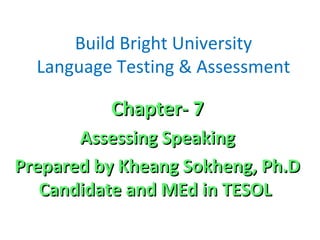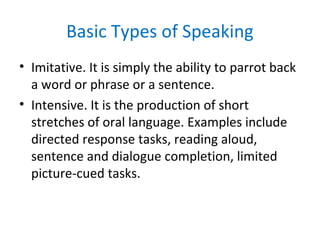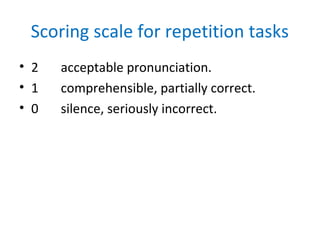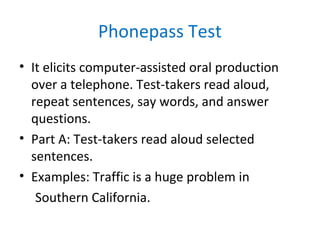This document discusses various methods for assessing speaking ability, including imitative, intensive, responsive, interactive, and extensive speaking tasks. It provides examples and descriptions of assessment tasks like word repetition, picture description, role plays, interviews, presentations and story retelling. Scoring methods are outlined for tasks like repetition, read-alouds, interviews and presentations. The document emphasizes specifying assessment criteria and eliciting optimal speaking outputs for reliable evaluation.































![To be Continued
• What is your favorite food?/Tell me about your
exciting experience you’ve had.
• 3. Probe:
• What are your goals for learning English in this
program?/Describe your academic field to me. What
do you like or dislike about it?/Describe someone
you greatly respect, and tell me why you respect that
person./If you were [president, prime minister] of
your country, what would you like to change about
your country?](https://image.slidesharecdn.com/chapter7assessingspeaking-150105164051-conversion-gate02/85/Chapter-7-assessing-speaking-32-320.jpg)










